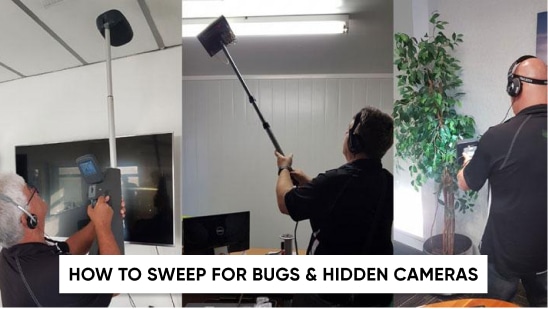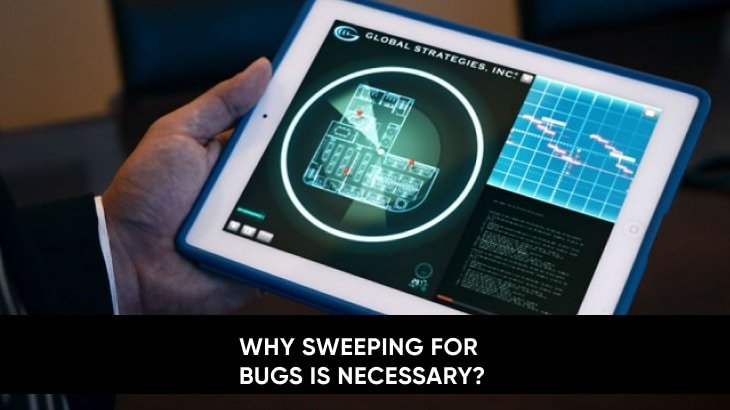The risks of electronic surveillance are growing by the day. Big organizations and high-profile individuals are vulnerable to spying. They were dropping through electronic bugs ranging from hidden spy cameras to audio-video transmitters, recorders, microchip bugs, phone lines, cellular network bugs, etc.
With such looming threats to privacy and data, there is a strong need for adequate technical surveillance countermeasures. What are TSCM, Debugging, and Bug Sweeps All About? Is something we should learn about.
Advance Detective Agency uses TSCM, debugging, and bug sweeps for investigatory purposes. Especially in metropolitan cities, these agencies prefer using them as a possible aid. Detective agency in Delhi and other populated cities need to use TSCM for investigatory purposes.
Technical Surveillance Counter Measures (TSCM)
Technical Surveillance Counter Measures (TSCM) include all countermeasures employed to prevent or detect sensitive, classified, or private information interception. It is typically an inspection by a technician or engineer of a physical item. The purpose is to locate possible covert surveillance devices, technical security weaknesses, and technical security hazards.
A TSCM specialist will also evaluate for weaknesses in all locks, alarms, and other physical and electronic security or controls systems. The most advanced debugging equipment relies on unique techniques and methods for electronic bug detection. Secure privacy of several top-notch corporations, businesses, government agencies and high-profile individuals through professional debugging service.
Objectives of any TSCM Program
Measures will be taken to detect technical surveillance devices, technical security hazards, and physical security weaknesses that would permit a facility’s technical or physical penetration.
A technical surveillance device is an item designed to intercept conversations or electronic transmissions and is commonly known as bugs.
A technical security hazard may allow the unintentional transmission of information and any condition that could permit an area’s technical surveillance. This condition may occur with equipment due to its standard design, installation, operation, maintenance, component deterioration, or damage.
The process of neutralizing or negating technical devices is employed by making the placement of such widgets more difficult. This includes ensuring that a room is protected with adequate physical construction and security measures, thus making the order or use of illegal listening devices ineffective.
A method to deter, or make extremely difficult, is introducing an eavesdropping device by establishing particular areas, security areas, for the conduct of classified or sensitive activities.
Eavesdropping Detection TSCM
Eavesdropping detection TSCM services help some premier organizations and government agencies cut across industry verticals. This service is beneficial to all those companies whose information and data are vulnerable or who want to protect their confidential and sensitive information.
What is Debugging & Bug Sweeping?
Whether it’s a hidden camera or audio-video transmitters, microchip bugs or video devices or recorders, some specialists can detect any device posing a threat to your data or security through Debugging and Bug Sweep. What is Debugging & Bug Sweeping all about?
Debugging is detecting and removing existing and potential errors. To prevent the incorrect operation of a system, debugging is used to find and resolve bugs or defects.
When various subsystems or modules are tightly coupled, debugging becomes harder as any change in one module may cause more bugs to appear in another. Sometimes it takes more time to debug.
Debugging tools or debuggers identify coding errors at various development stages. They are used to reproduce the conditions in which error has occurred, then examine the state and locate the cause.
Debuggers can trace the program execution step-by-step by evaluating the value of variables and stop the execution wherever required to get the value of variables or reset the program variables. Some programming language packages provide a debugger for checking the code for errors while it is being written at run time.
Steps in Debugging Process
1. Reproduce the problem.
2. Describe the bug. Try to get as much input from the user to get the exact reason.
3. Capture the program snapshot when the bug appears. Try to get all the variable values and states of the program.
4. Analyse the snapshot based on the state and action. Based on that, try to find the cause of the bug.
5. Fix the existing bug and check that any new bug does not occur.
Bug Sweeps
Bug sweeps uncover illegal and unknown technical surveillance devices and identify security weaknesses. Anyone can quickly and cheaply acquire surveillance devices and use them to invade privacy. While there are a lot of surveillance countermeasure service providers, it is essential to use a trained, qualified investigator. Their use of electronic surveillance detection can give the confidence that the individuals’ privacy is protected.
List of Common Bugs and Surveillance Devices
- As technology improves, Hidden cameras are gaining quality but losing size. Tiny cameras can be hidden anywhere and disguised as anything from air purifiers to smoke detectors.
- Cell Phone Spy Software can monitor software downloaded to a mobile phone and record calls, view complete web history, and record the sound from its surroundings.
- Audio Surveillance is a microphone device placed in an area to monitor and record communication. Like cameras, these can be hidden anywhere and disguised as something as harmless as a powerstrip.
- Wiretapping is another interception of telephone communication through a telephone signal.



